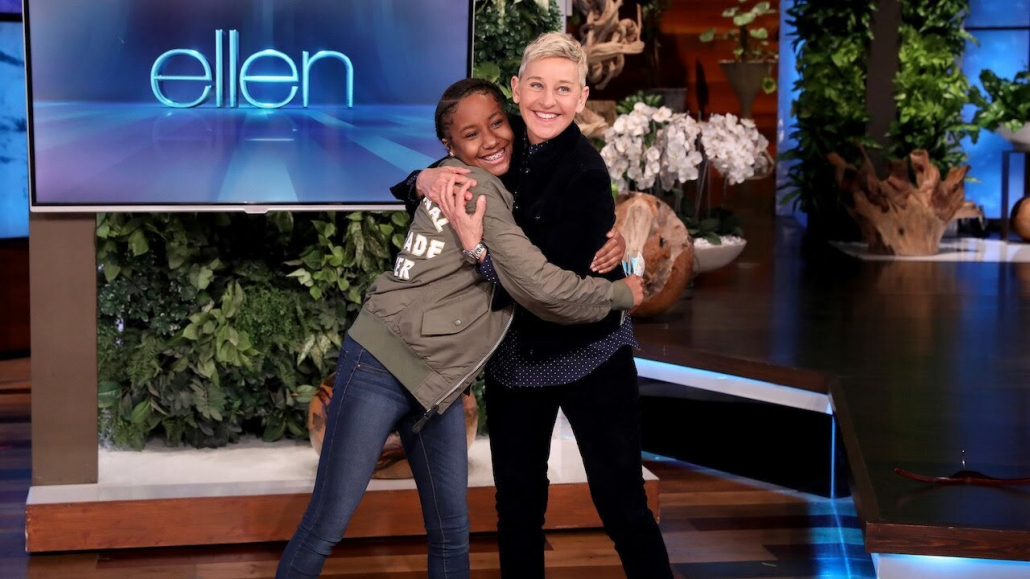Give credit where it is due

Jimmy Fallon messed up.
Yes, one of America’s favorite late night hosts dropped the ball when he had Addison Rae teach him eight TikTok dances back in March. Fallon was doing what any late night host would do, following trends to keep up with his audience.
The problem was that Rae was not the creator of the dances she was teaching. This doesn’t seem like a big deal, I mean the very essence of TikTok is that trends get repeated or performed by different people. Most creators choreograph dances with the intention of their idea being repeated.
However, the problem is that Addison got a spot on late night TV while the original creators didn’t. Trust me, Fallon received a lot of backlash because of it — just scroll down to the comment section of the YouTtube video.
One user, Lae Lae, commented “The fact that Addison is on the TONIGHT SHOW for doing dances that she didn’t even create. This is so unfair.”
Agreeing with that sentiment, a user named Nai Nai said, “She isn’t the creator of these dances, the real creators should be up here doing THEIR dances plus she didn’t even credit them for all the work they did!”
These viewers have reason to be angry because this segment on “The Tonight Show” displays the flaws of TikTok’s supposed “dance credit” practice.
The app has an unspoken rule — if you are doing a dance you didn’t create you have to credit the choreographer by adding “dc: [insert choreographer’s username here].” If someone forgets to add this dance credit, comments canceling the person who failed to shout out the original creator roll in.
But how effective are these dance credits? I mean seriously; you mean to tell me that every person who sees a dance on their “For You” page clicks on the original creator’s profile? I know I don’t; I scroll aimlessly and quickly through TikTok, attaining whatever small dose of serotonin that I can get.
Not only that, the intent behind giving original creators credit has been tainted. No one is doing it because they genuinely want to support those creators, they are doing it so they don’t get canceled.
Just like any other TikToker would do, Fallon’s team credited the dance choreographer’s in the YouTube video description. Fallon definitely has a lot of clout, but even that was not enough for those creators to get any opportunities.
It is TikTokers like Charli D’Amelio, Dixie D’Amelio and Rae who have gained traction from co-opting their dances everyday. They are the ones getting noticed and reaping the benefits. That is, they are the ones receiving brand deals, sponsorships and movie roles (not like “He’s All That” is anything to be proud of, but still).
As these creators continue to grow their following, the choreographers are left as a username in the comment section of their content. The original choreographers — who are often Black — get lost in the abyss of millions of daily videos. (Side note: If you want to read an amazing piece on the Black creators’ TikTok strike, read Marlize Duncan’s piece from her Daily Trojan column “Hustle and Fro: Quiet ain’t no back tok.”)
In order to settle the backlash he received from Rae’s stint on the show, Fallon invited the original dance creators to visit the show the next night, but, at that point, it was obvious his publicity team was doing damage control.
Giving credit where it is due shouldn’t be an afterthought, so how can we fix the problem?
One solution to this problem could be easily undertaken by non-Black creators. Creators choosing to copy a dance should do so by duetting the original video. This feature sets the new and original video side-by-side on a user’s “For You” page. This way, the viewer feels more inclined to go back to the original video and look through that TikToker’s content.
Another solution is a long shot, but TikTok should add a feature that leads audiences to the original creator in a more eye-catching way. Maybe that creator could be the face of the trending page or TikTok gives a label that says “creator of the viral dance” when people go to the sound.
In the same way that a company can’t steal a trademark or a student can’t plagiarize their work, there has to be a way for TikTok creators to gain the attention they deserve for their original work. TikTok needs explicit rules, just like YouTtube’s copyrighted music rules.
Until TikTokers get the recognition they deserve, controversy and backlash are going to continue over who rightly deserves to get noticed in the industry. This will cause a huge struggle for all artists, not just TikTokers, to gain credit for their original work.
Trinity Gomez is a senior writing about TikTok and popular culture. Her column, “TikTalk,” runs every other Friday.

